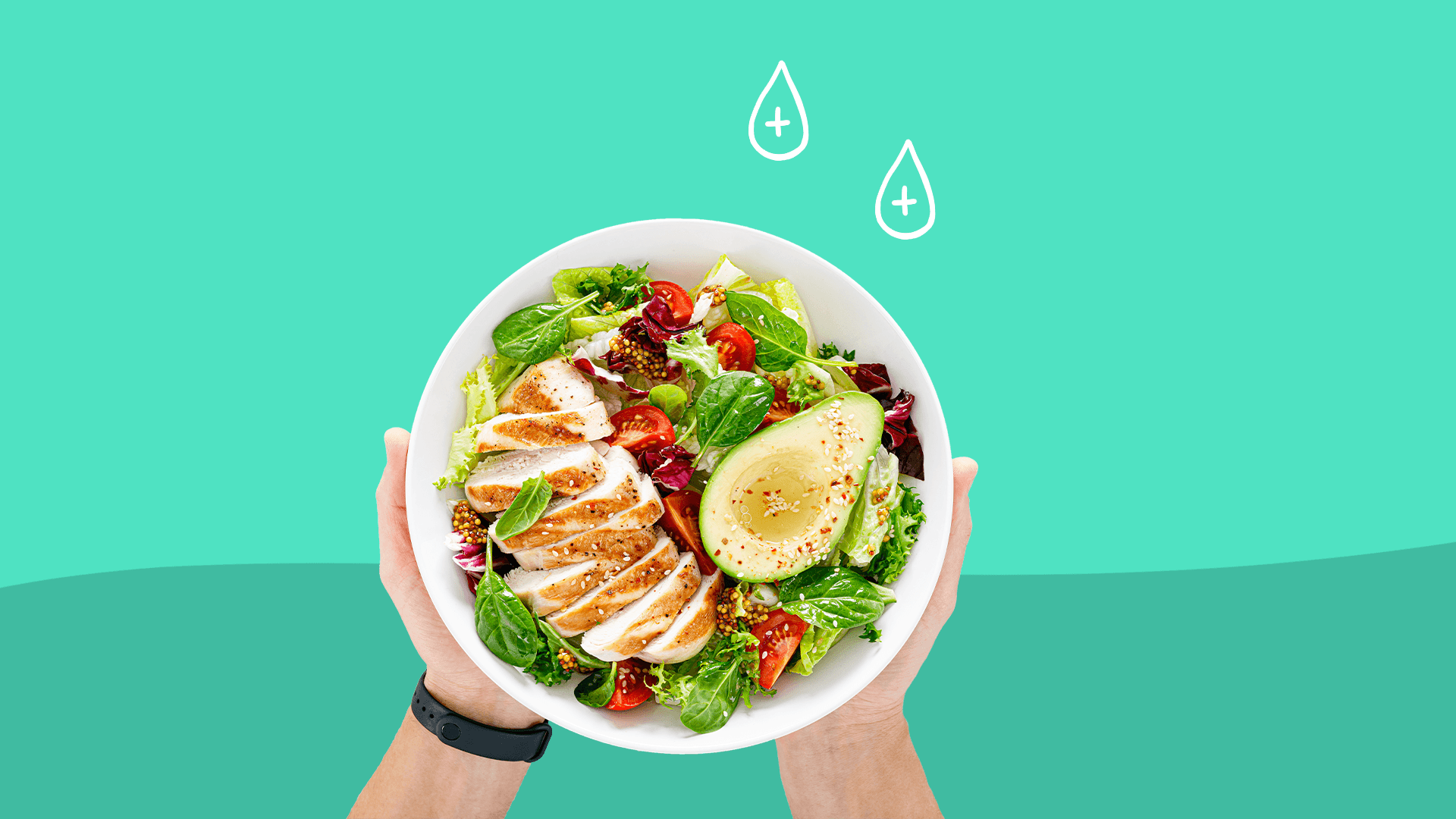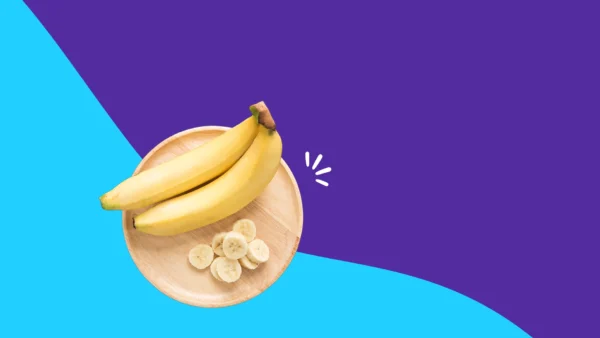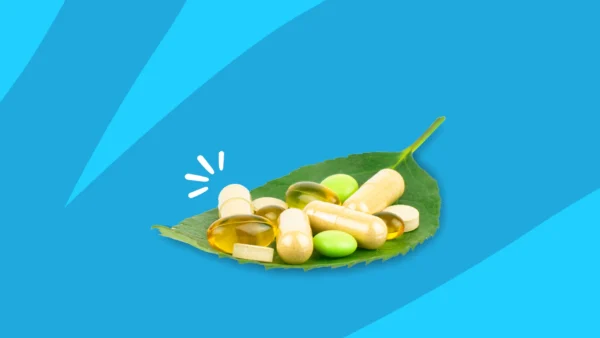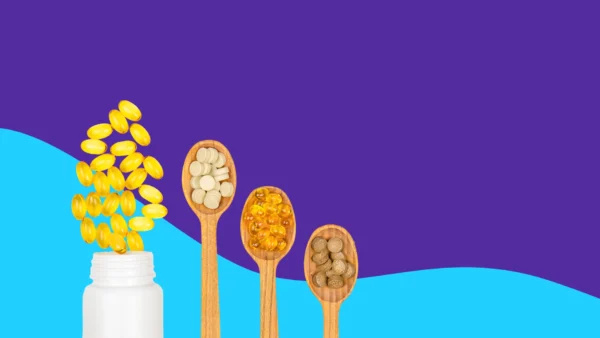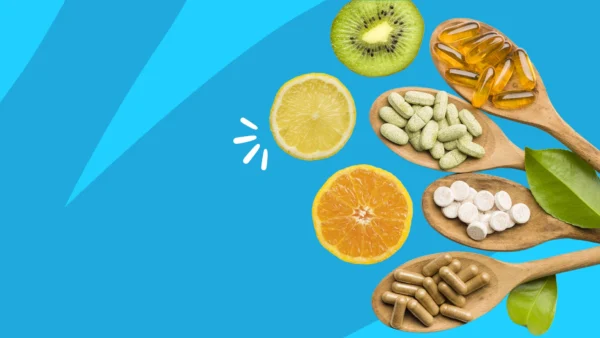Being diagnosed with a type of diabetes, or high blood sugar, can be serious—but with the right treatment and care, diabetes can be managed and doesn’t have to affect your quality of life.
At its core, diabetes is a condition where the body can’t maintain healthy levels of glucose, or sugar, in the blood. Because glucose is a primary source of energy for bodies, unhealthy levels of it—too much or too little—can cause both short- and long-term health complications. In the U.S., about 10.5% of the population has some type of diabetes.
No matter which type of diabetes you have, a major part of living well with the condition includes incorporating a diabetic diet. The right diabetes diet will help you feel your best—but how do you know what you should eat? Read on to find out what diets are best for diabetes, what foods you should add or avoid to your plate, and other forms of diabetes care.
What is the best diabetes diet plan?
A diabetes diet incorporates food choices from the five food groups: vegetables, fruits, grains, protein, and dairy (or dairy substitutes). Eating healthily helps keep glucose levels in check without drastic highs and lows and is a big part of reaching or maintaining a weight range that’s right for your health.
“The best diets for diabetes management are the ones that are rated best for nearly all outcomes,” says Julie Miller Jones, Ph.D., a licensed nutritionist based in St. Paul, Minnesota. “Highly rated diets that contain all the food groups; can be used for a lifetime by the person with diabetes; and the whole family can be happy, healthy, and satisfied eating the same diet, are the best ones.”
Diets that diabetes educators recommend include the DASH diet, the Mediterranean diet, and the USDA MyPlate eating plan.
The DASH Diet
The National Heart, Lung, and Blood Institute recommends the DASH diet, which stands for Dietary Approaches to Stop Hypertension. The DASH meal plan recommends eating lots of veggies, fruits, and whole grains, and including fat-free and low-fat dairy products, fish, poultry, beans, nuts, and vegetable oils. With DASH, foods high in saturated fat, like full-fat dairy, fatty meals, and tropical oils, along with sweet drinks, processed foods, and added sugars are limited.
What makes DASH appealing to many is that it’s flexible and incorporates accessible foods—and it works.
“It’s been studied for almost 30 years,” Miller says, “so it has lots of data showing it’s associated with reduced risk of most chronic diseases.” It’s been found to lower blood glucose levels, and insulin resistance, while helping with weight loss, all important when it comes to managing all types of diabetes with diet.
RELATED: How to start (and stick to) a heart-healthy diet
The Mediterranean diet
A similar healthy diet is the Mediterranean diet. It centers fruits, vegetables, grains, nuts, seeds, and olive oil; with fish and poultry consumed in low amounts. The main differences between this and the DASH diet is that DASH includes dairy and other types of meat, while the Mediterranean diet recommends healthy fats like olive oil instead.
The USDA MyPlate eating plan
The USDA MyPlate eating plan offers similar guidelines, focusing on fruits, a variety of vegetables, whole grains, lean protein sources, including beans, poultry, and soy, and low- or no-fat dairy.
Diabetes Plate Method
The American Diabetes Association recommends the Diabetes Plate Method, which is a process of making sure your plate is sectioned a certain way:
- Half is filled with half non-starchy vegetables like cucumbers, tomatoes, and green beans, which are low on the glycemic index
- One quarter should be lean protein foods, such as chicken, salmon, or cheese
- And one quarter of the plate should be carbohydrates, like starchy veggies (sweet potatoes and plantains) or whole-wheat bread. This smaller amount of carbs can prevent your blood sugars from rising too high after eating.
These diabetes meal plans all focus more on adding beneficial foods, rather than heavily restricting anything, with sweets and treats acceptable in moderation. This helps make them easier for people to adhere to for the long-term and also helps get other family members onboard.
Ultimately, when thinking about what will work for you, the best diet to choose is the one that you can stick to long term.
5 foods to eat with diabetes
Although the above diets are all slightly different, you can’t go wrong choosing the following five healthy foods.
1. Vegetables
These are on every “best of” list for a reason—they’re so darn good for you. The key here is finding the veggies that you enjoy and adding some variety to your plate. Don’t forget about leafy greens like spinach, bok choy, kale, collard greens, and arugula, which are packed with goodness. Even a modest increase in vegetable intake can make a significant difference as part of a Type 2 diabetes diet.
2. Fruits
Ahh, nature’s candy. Often, people with diabetes steer clear of fruits due to fear of the sugar in fruit. However, a four-year study of more than 500,000 Chinese adults found that eating fresh fruit daily reduced their risk of developing diabetes by 12% when compared to never or rarely eating fruit. And those individuals who already had diabetes before commencing the study but ate fresh fruit at least three times a week lowered their risk of developing diabetes-related complications by 13%-28%.
There are so many delicious fruit options that are low on the glycemic index, including berries, which are low in sugar and packed with fiber, apples, kiwis, and grapes. You may want to limit higher GI fruits like mangos, pineapples, and watermelons, as they might cause blood sugar to spike too quickly. Unsweetened frozen fruit is a great option when fresh fruit isn’t available.
3. Lean protein
Lean meats and protein are an important part of a healthy diabetes diet plan. One small study found that a high-protein diet helped lower blood glucose in people with Type 2 diabetes and improved glucose overall. Another found that increasing protein while lowering carb intake can help lower blood sugar in Type 2 diabetics. And eating lean seafood has been linked with reducing the development of insulin resistance and Type 2 diabetes.
Luckily, there are plenty of choices when it comes to choosing protein. Fish like mackerel and tuna, shellfish, skinless poultry, tofu, beans and legumes, and eggs are all high in protein and appropriate for a diabetic diet.
4. Whole grains
Although carbs do impact blood sugar more than most other foods, there’s no reason to give up bread just because you have diabetes. “Carbohydrates are a part of a healthy-eating pattern for people living with diabetes and should not be avoided,” says Angela Ginn-Meadow, RN, a registered dietitian and certified diabetes educator based in Baltimore, Maryland. A study that followed nearly 200,000 Americans over 30 years found that a higher consumption of whole grains, like oatmeal, brown rice, and wheat germ was significantly associated with a lower risk of Type 2 diabetes.
Foods like whole-grain bread, brown rice, quinoa, and whole-grain pasta are all easy swaps for their refined white grain counterparts. They’re more nutrient dense as well and their high-fiber levels mean that they keep blood sugar more stable.
RELATED: What are carbs?
5. Low-fat dairy
Cheese fans, rejoice. You can still eat dairy products with diabetes, as it’s been associated with lowering the risk of Type 2 diabetes. It’s a good idea to swap out versions of full-fat dairy to low- or no-fat where you can, which can also help regulate glucose levels. You can make easy swaps for things like sour cream, milk, cheeses, and yogurt.
6 foods to avoid with diabetes
When it comes to limiting food, the focus is on minimizing foods that will have a negative impact on your blood sugar, blood pressure, weight, and overall well-being. Eating these foods occasionally won’t harm you, but consistently eating them will have a detrimental effect on your health. To feel your best, keep these foods out of your kitchen.
1. Canned fruit
While fruit is great for you, canned fruits are a little different. Canned fruits that are packed in syrup are unnecessarily loaded with added sugar, which can raise your blood sugar more than the same fruit in another form. If you’ve got a fruit craving, choosing fresh, frozen, or canned fruits that are canned in water or its own juice are better options.
2. Added sugar
They may taste good, but it’s best to limit sugary foods that are rich in sweeteners, like cookies and cupcakes. These can spike blood sugar, keep it elevated, and increase risk of heart disease. Too much added sugar can also lead to weight gain, which is a risk factor for Type 2 diabetes, and diets high in sugar can reduce insulin sensitivity. If you’ve got a sweet tooth, better options include homemade, lower-fat versions of your favorite baked goods.
3. Fried foods
Fried foods have long been associated with poorer health outcomes and that remains true if you have diabetes. A lot of it has to do with how the foods are cooked: they’re often dredged in batter or flour, and then cooked in oils that are loaded with trans fats, which are difficult for the body to break down. If you have diabetes, it’s best to limit fried foods. When examining data of more than 100,000 people over 25 years, researchers found that those who ate fried food at least once a week had a higher risk of diabetes, and that risk increased as fast food consumption did. Struggling to turn down fried foods? Try making your favorites at home in the oven or in the air fryer instead.
4. Sugary drinks
Just one 12 oz. can of Coca-Cola contains 39 grams of sugar, the equivalent of 9.75 teaspoons of sugar. A grande pumpkin spice latte has 30 grams of sugar—just in the pumpkin syrup. These sugary drinks all raise your blood sugar rapidly and can contribute to weight gain. In fact, one meta-analysis found that sugar-sweetened drinks were linked to a higher rate of Type 2 diabetes. Skip the sugar-laden sips and opt for water, seltzer, low-sugar drinks, or coffee with low-fat milk.
5. Alcohol
Having diabetes doesn’t mean you can never have a drink, but there are risks it’s important to be aware of if you do decide to have that happy hour beer. Drinking can lower blood sugar levels, particularly in Type 1 diabetics. The signs of low blood sugar, which include dizziness, nausea, feeling sleepy, or confusion, can easily be confused as being drunk. One small study noted that delayed hypoglycemia occurred in some diabetics, where they had low blood sugar the morning after drinking. Regular alcohol consumption can also increase insulin resistance, making it more difficult for Type 2 diabetics to manage their blood sugar.
If you decide to drink alcohol, it’s recommended you test your blood sugar beforehand and be sure to have a snack with your beverage. It’s a good idea to stick to the recommended moderate amount: 2 drinks or less in a day for men and 1 drink or less in a day for women. And if you’re taking medication for diabetes, be sure to discuss with your doctor, as there are common interactions with alcohol and diabetes medications, said Ginn-Meadow.
6. Processed meats
Processed meats such as bacon, sausage, and deli meats are associated with a 19% higher risk of Type 2 diabetes. Regular consumption of these meats has been identified as major dietary risk factors for diabetes. This could be because they’re high in sodium and dietary cholesterol; processed meats contain about 400% more sodium than their unprocessed counterparts.
RELATED: Why you should monitor your cholesterol levels
Is it safe for people with diabetes to fast?
Some of today’s most popular diets, including ketogenic (keto) and intermittent fasting, are ones that people with diabetes should avoid.
A keto diet focuses on high fat, moderate protein, and very low carb intake. The idea is that because carbs are your body’s primary fuel source, when they are kept low, to about 50 grams or fewer a day, your body uses fat as fuel instead, breaking it down into ketones during a process known as ketosis. When this happens, insulin secretion is reduced, making it attractive to people with diabetes. And because the keto diet drastically reduces carbs, many people see weight loss at the start.
But it’s not actually a great option for most people, including diabetics, says Miller Jones. “Glucose lows can be very problematic for people with diabetes,” she explains. “People using the ketogenic diet while on insulin may risk their blood sugar dropping too low. The long-term effects of being in ketosis are not well-studied in healthy or diabetic persons, and the diet is [not recommended] because of side effects and most people’s inability to stay on this diet for any length of time.”
Intermittent fasting comes with its own dangers for diabetics. There are a variety of intermittent fasting plans, from alternate day fasting to 16/8, where you fast for 16 hours each day and then eat during the other eight. However, fasting for extended periods of time and then breaking the fast can cause blood sugar levels to swing from too low to too high. Ginn-Meadow prefers her clients look at their diet instead, as fasting increases the risk of blood sugar levels dropping below normal levels. “Intermittent fasting focuses on the time of when someone is eating versus what is on the plate,” she says. “If a person with diabetes is interested in fasting, speak with your healthcare provider for guidance to prevent hypoglycemia [low blood sugar].”
RELATED: Ketosis vs. ketoacidosis
Other ways to treat diabetes
In addition to dietary changes, your doctor may prescribe lifestyle changes. Steps you can take to improve diabetes management are:
- Quit smoking. People who smoke are at a higher risk of developing Type 2 diabetes and those who already have diabetes require more insulin and are at higher risk of other serious health problems.
- Add exercise. Being physically active is one of the best things you can do to treat your diabetes. It improves blood glucose control, helps manage weight, and has a host of other health benefits. There’s no “perfect” diabetes exercise. Instead, focus on finding activities you enjoy and can engage in regularly.
- Relax. It’s easier said than done, but stress plays a role in diabetes. It’s been linked to the onset of Type 2 diabetes and chronic stress plays a physiological role, making it more difficult to control. It’s time to indulge in self-care, whether that’s relaxing with a book, setting some boundaries, or working with a therapist.
Diabetes can be tricky, but it is a manageable disease, and adhering to healthy eating habits and lifestyle changes can help.
Vitamins and supplements
As far as vitamins, the only ones that have any evidence of benefits for people with diabetes are magnesium and B12, says Ginn-Meadow. Magnesium intake is already low in the general population but particularly for people with diabetes. However, that doesn’t necessarily mean you’ll need to take supplements.
“Food sources of magnesium include avocados, leafy greens, nuts, seeds such as flax and pumpkin, legumes and tofu, buckwheat and quinoa, whole grains, wheat germ, wheat and oat bran,” says Miller Jones. You can find B12 in salmon, tuna, clams, yogurt, eggs, and ground beef. If you are thinking about taking vitamins or supplements, be sure to talk to your healthcare provider first.
Medications for diabetes
Depending on your type of diabetes, you may be prescribed treatments or medication to help manage it.
People with Type 1 diabetes will typically be prescribed insulin, either by insulin injections or by using an insulin pump.
Some individuals with Type 2 diabetes will find that lifestyle modifications, like a healthier diet or increased physical activity levels, is enough to regulate blood sugar. Others might also need to use insulin or take medications, such as metformin. While diet can help improve symptoms, if your doctor prescribes you medication, it’s important to continue taking it until advised otherwise.
For both gestational diabetes and prediabetes, it’s likely your provider will recommend treating it with diet and lifestyle changes first.
RELATED: Gestational diabetes diet | Prediabetes diet
When to seek help
If you find that you’re suddenly feeling confused and dizzy, hungry, tired, or weak, it’s likely that your blood sugar levels have dropped. If after having a high-carb snack and waiting some time doesn’t help, you should speak with or see a healthcare provider as quickly as possible.
If blood sugar levels are too high, also known as hyperglycemia, you may suddenly experience fatigue, blurry vision, more bathroom visits than normal, or increased thirst. If this happens, you should also speak with or see your healthcare provider.



